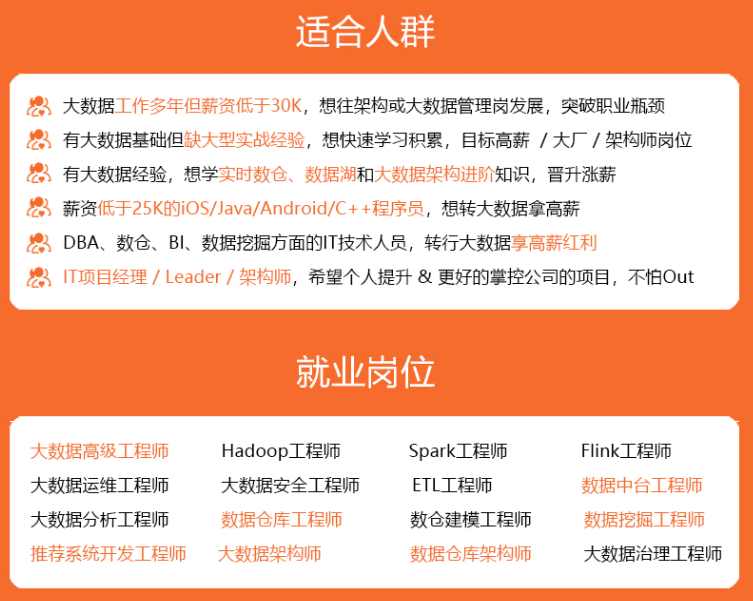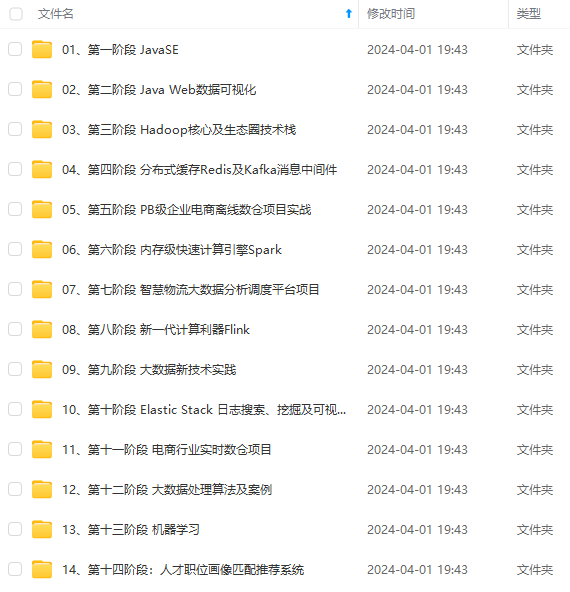

网上学习资料一大堆,但如果学到的知识不成体系,遇到问题时只是浅尝辄止,不再深入研究,那么很难做到真正的技术提升。
一个人可以走的很快,但一群人才能走的更远!不论你是正从事IT行业的老鸟或是对IT行业感兴趣的新人,都欢迎加入我们的的圈子(技术交流、学习资源、职场吐槽、大厂内推、面试辅导),让我们一起学习成长!
print('origin size:', img_itk.GetSize())
new_itk = transform(img_itk, [3.22, 1.62, 1.62])
sitk.WriteImage(new_itk, img_path)
print(‘labels is resampled!’)
---
下面开始介绍nnUnet的数据预处理方法:
**输入指令:**
python nnunet/experiment_planning/nnUNet_plan_and_preprocess.py -t 40 --verify_dataset_integrity
`verify_dataset_integrity`这里不再赘述,主要是根据验证数据集结构,第一次运行的时候最好还是加上。
##### 裁剪
裁剪的目的是裁去黑边,减少像素值为0的边缘区域,裁剪的时候保持空间分辨率等信息不变。
def crop(task_string, override=False, num_threads=default_num_threads):
# 输出目录:‘/root/data/nnUNet_raw_data_base/nnUNet_cropped_data/Task040_KiTS’
cropped_out_dir = join(nnUNet_cropped_data, task_string)
maybe_mkdir_p(cropped_out_dir)
if override and isdir(cropped_out_dir):
shutil.rmtree(cropped_out_dir)
maybe_mkdir_p(cropped_out_dir)
splitted_4d_output_dir_task = join(nnUNet_raw_data, task_string)
lists, _ = create_lists_from_splitted_dataset(splitted_4d_output_dir_task) # 创建裁剪列表
imgcrop = ImageCropper(num_threads, cropped_out_dir)
imgcrop.run_cropping(lists, overwrite_existing=override)
shutil.copy(join(nnUNet_raw_data, task_string, "dataset.json"), cropped_out_dir)
**create\_lists\_from\_splitted\_dataset**加载所有的训练集的图像地址,lists一共有210个元素,每个元素包含图像和标签。
def create_lists_from_splitted_dataset(base_folder_splitted):
lists = []
json_file = join(base_folder_splitted, "dataset.json")
with open(json_file) as jsn:
d = json.load(jsn)
training_files = d['training']
num_modalities = len(d['modality'].keys())
for tr in training_files:
cur_pat = []
for mod in range(num_modalities):
cur_pat.append(join(base_folder_splitted, "imagesTr", tr['image'].split("/")[-1][:-7] +
"\_%04.0d.nii.gz" % mod))
cur_pat.append(join(base_folder_splitted, "labelsTr", tr['label'].split("/")[-1]))
lists.append(cur_pat)
return lists, {int(i): d['modality'][str(i)] for i in d['modality'].keys()}
重点是这两个函数:
imgcrop = ImageCropper(num_threads, cropped_out_dir)
imgcrop.run_cropping(lists, overwrite_existing=override)
**ImageCropper**是一个类,包含10个方法。
重点是crop和run\_cropping两个方法:
* crop:裁剪到非零区域,返回data, seg, properties
* run\_cropping:执行裁剪操作,并且将结果保存为.npz文件(包含data和seg),将size, spacing, origin, classes, size\_after\_cropping 等属性保存在.pkl文件。

但是执行代码时,发现裁剪前后尺寸没有变化,可能是因为图像没有什么黑边
# 裁剪的时候seg!=None
def crop(data, properties, seg=None):
shape_before = data.shape # 原始尺寸
data, seg, bbox = crop_to_nonzero(data, seg, nonzero_label=-1) # 裁剪结果
shape_after = data.shape # 裁剪尺寸
print("before crop:", shape_before, "after crop:", shape_after, "spacing:",
np.array(properties["original\_spacing"]), "\n")
properties["crop\_bbox"] = bbox
properties['classes'] = np.unique(seg)
seg[seg < -1] = 0
properties["size\_after\_cropping"] = data[0].shape
return data, seg, properties
##### 数据分析
收集上一步裁剪得到的图像信息(尺寸、体素间距、灰度分布),为当前任务制定合适的训练计划(plan)
# '/root/data/nnUNet\_raw\_data\_base/nnUNet\_cropped\_data/Task040\_KiTS'
cropped_out_dir = os.path.join(nnUNet_cropped_data, t)
# '/root/data/nnUNet\_preprocessed/Task040\_KiTS'
preprocessing_output_dir_this_task = os.path.join(preprocessing_output_dir, t)
# we need to figure out if we need the intensity propoerties. We collect them only if one of the modalities is CT
dataset_json = load_json(join(cropped_out_dir, 'dataset.json'))
modalities = list(dataset_json["modality"].values())
collect_intensityproperties = True if (("CT" in modalities) or ("ct" in modalities)) else False
dataset_analyzer = DatasetAnalyzer(cropped_out_dir, overwrite=False, num_processes=tf) # this class creates the fingerprint
_ = dataset_analyzer.analyze_dataset(collect_intensityproperties) # this will write output files that will be used by the ExperimentPlanner
maybe_mkdir_p(preprocessing_output_dir_this_task)
shutil.copy(join(cropped_out_dir, "dataset\_properties.pkl"), preprocessing_output_dir_this_task)
shutil.copy(join(nnUNet_raw_data, t, "dataset.json"), preprocessing_output_dir_this_task)
分析得到的`dataset_properties.pkl`结果如下:

##### 创建数据指纹
根据上一步得到的数据集信息,针对不同的训练任务,制定合适的训练计划(plan)
if planner_3d is not None:
if args.overwrite_plans is not None:
assert args.overwrite_plans_identifier is not None, "You need to specify -overwrite\_plans\_identifier"
exp_planner = planner_3d(cropped_out_dir, preprocessing_output_dir_this_task, args.overwrite_plans,
args.overwrite_plans_identifier)
else:
exp_planner = planner_3d(cropped_out_dir, preprocessing_output_dir_this_task)
exp_planner.plan_experiment()
if not dont_run_preprocessing: # double negative, yooo
exp_planner.run_preprocessing(threads)
if planner_2d is not None:
exp_planner = planner_2d(cropped_out_dir, preprocessing_output_dir_this_task)
exp_planner.plan_experiment()
if not dont_run_preprocessing: # double negative, yooo
exp_planner.run_preprocessing(threads)
预处理执行完毕,得到如下处理结果:
nnUNet_preprocessed文件夹下
|-- Task040_KiTS
|-- dataset.json
|-- dataset_properties.pkl
|-- gt_segmentations
|-- nnUNetData_plans_v2.1_2D_stage0
|-- nnUNetData_plans_v2.1_stage0
|-- nnUNetPlansv2.1_plans_2D.pkl
|-- nnUNetPlansv2.1_plans_3D.pkl
`-- splits_final.pkl
这里生成的文件都可以打开来看看,对预处理方法和数据指纹有一个了解
* dataset.json在**数据获取**阶段产生
* daset\_properties为数据的 size, spacing, origin, classes, size\_after\_cropping 等属性
* gt\_segmentations为图像分割标签
* nnUNetData\_plans\_v2.1\_2D\_stage0和nnUNetData\_plans\_v2.1\_stage0是预处理后的数据集
* splits\_final.pkl是五折交叉验证划分的结果,一共210个病人,42为一折
* nnUNetPlansv2.1\_plans\*.pkl为训练计划,参考官方文档中的**edit\_plans\_files.md**可进行编辑
以`nnUNetPlansv2.1_plans_3D.pkl`为例,

#### 3.模型训练
一行代码开始训练,执行过程以及调参可以参考我的博客[nnUnet代码解读–模型训练](https://bbs.csdn.net/forums/4f45ff00ff254613a03fab5e56a57acb)
python nnunet/run/run_training.py CONFIGURATION TRAINER_CLASS_NAME TASK_NAME_OR_ID FOLD # 格式
python nnunet/run/run_training.py 3d_fullres nnUNetTrainerV2 40 1
训练开始后,训练日志和训练结果记录在nnUNet\_trained\_models/nnUNet/3d\_fullres/Task040\_KiTS文件夹下
UNetTrainer__nnUNetPlansv2.1
├── fold_1
│ ├── debug.json
│ ├── model_best.model
│ ├── model_best.model.pkl
│ ├── model_final_checkpoint.model
│ ├── model_final_checkpoint.model.pkl
│ ├── postprocessing.json
│ ├── progress.png
│ ├── training_log_2022_5_4_12_06_14.txt
│ ├── training_log_2022_5_5_10_30_05.txt
│ ├── validation_raw
│ └── validation_raw_postprocessed

训练过程Loss曲线以及在线计算的Dice曲线
>
> 这里我想补充一下nnUnet的评价指标
>
>
>
**在线评价**
下面这段代码是nnUnet计算dice值的方法
先对每张图像中的每个类别分别计算tp, fp, fn,再对一个batch内的所有图像的tp, fp, fn求和,同时对一个batch求dice
import numpy as np
import torch
def sum_tensor(inp, axes, keepdim=False):
axes = np.unique(axes).astype(int)
if keepdim:
for ax in axes:
inp = inp.sum(int(ax), keepdim=True)
else:
for ax in sorted(axes, reverse=True):
inp = inp.sum(int(ax))
return inp
def run_online_evaluation(output, target):
# torch.Size([b,num_classes, 80, 160, 160]) torch.Size([b,1, 80, 160, 160])
with torch.no_grad():
num_classes = output.shape[1]
output_softmax = torch.softmax(output,dim=1)
output_seg = output_softmax.argmax(1) # [b,80,160,160]
target = target[:, 0] # [b,80,160,160]
axes = tuple(range(1, len(target.shape))) # (1,2,…,num_classes)
tp_hard = torch.zeros((target.shape[0], num_classes - 1)).to(output_seg.device.index) # [b,num_classes-1]
fp_hard = torch.zeros((target.shape[0], num_classes - 1)).to(output_seg.device.index) # [b,num_classes-1]
fn_hard = torch.zeros((target.shape[0], num_classes - 1)).to(output_seg.device.index) # [b,num_classes-1]
for c in range(1, num_classes):
tp_hard[:, c - 1] = sum_tensor((output_seg == c).float() * (target == c).float(), axes=axes)
fp_hard[:, c - 1] = sum_tensor((output_seg == c).float() * (target != c).float(), axes=axes)
fn_hard[:, c - 1] = sum_tensor((output_seg != c).float() * (target == c).float(), axes=axes)
# [b,num_classes-1] -> [num_classes-1,]
tp_hard = tp_hard.sum(0, keepdim=False).detach().cpu().numpy()
fp_hard = fp_hard.sum(0, keepdim=False).detach().cpu().numpy()
fn_hard = fn_hard.sum(0, keepdim=False).detach().cpu().numpy()
print(list((2 \* tp_hard) / (2 \* tp_hard + fp_hard + fn_hard + 1e-8)))
print(list(tp_hard))
print(list(fp_hard))
print(list(fn_hard))
if name == ‘__main__’:
outputs = torch.randn(4,3,80,160)
targets = torch.randint(0, 3, (4,1,80,160))
run_online_evaluation(outputs,targets)
>
> 但是我觉得直接对一个batch累加求dice不够准确,因为不同图像的目标区域大小不同,目标区域大的图像对目标区域小的图像影响太大了。
>
>
>
>
> 比较好的评价方法是应该对batch内的每张图像分别求dice,然后求平均。
>
>
>
下面这段代码中,作者也提到:
训练过程中的在线评价,只是对Dice值的一个估计,并不能代表最终的dice.
整体思路就是把每个batch当做一张图像去求的dice,迭代一个epoch之后,再对每个batch的dice求平均。
验证时,每个epoch中batch的数量取决于`num_val_batches_per_epoch`
def finish\_online\_evaluation(self):
self.online_eval_tp = np.sum(self.online_eval_tp, 0)
self.online_eval_fp = np.sum(self.online_eval_fp, 0)
self.online_eval_fn = np.sum(self.online_eval_fn, 0)
global_dc_per_class = [i for i in [2 \* i / (2 \* i + j + k) for i, j, k in
zip(self.online_eval_tp, self.online_eval_fp, self.online_eval_fn)]
if not np.isnan(i)]
self.all_val_eval_metrics.append(np.mean(global_dc_per_class))
self.print_to_log_file("Average global foreground Dice:", [np.round(i, 4) for i in global_dc_per_class])
self.print_to_log_file("(interpret this as an estimate for the Dice of the different classes. This is not "
"exact.)")
self.online_eval_foreground_dc = []
self.online_eval_tp = []
self.online_eval_fp = []
self.online_eval_fn = []
**最终评价**
模型训练完成后,对五折交叉验证的验证集进行评价
dataset\_val存储了验证集的信息,包含data, seg, properties
for k in self.dataset_val.keys():
properties = load_pickle(self.dataset[k][‘properties_file’])
fname = properties[‘list_of_data_files’][0].split(“/”)[-1][:-12]
if overwrite or (not isfile(join(output_folder, fname + “.nii.gz”))) or
(save_softmax and not isfile(join(output_folder, fname + “.npz”))):
data = np.load(self.dataset[k][‘data_file’])[‘data’]
print(k, data.shape)
data[-1][data[-1] == -1] = 0
softmax_pred = self.predict_preprocessed_data_return_seg_and_softmax(data[:-1],
do_mirroring=do_mirroring, # True
mirror_axes=mirror_axes, # 0,1,2
use_sliding_window=use_sliding_window, # True
step_size=step_size, # 0.5
use_gaussian=use_gaussian, # True
all_in_gpu=all_in_gpu, # False
mixed_precision=self.fp16)[1] # fp16=True
---
在线评价时,每个epoch从训练集中取一定数量的batch,取样的patch\_size为(80,160,160),计算dice以及tp,fp,fn
最终评价时,对划分的验证集的每个图像用patch\_size大小的滑动窗口进行评价,每个图像是经过充分评价的。
核心是`predict_preprocessed_data_return_seg_and_softmax`函数,输出验证集的分割结果以及`summary.json`文件。
**这里的dice等评价指标才是验证集的真实评价指标**
"mean": {
"0": {
......
},
"1": {
"Accuracy": 0.9993829712065982,
"Dice": 0.9577956529884739,
"False Discovery Rate": 0.049338979474340974,
"False Negative Rate": 0.03426020473989496,
"False Omission Rate": 0.000264596006662038,
"False Positive Rate": 0.0003583155624936977,
"Jaccard": 0.9195569582759517,
"Negative Predictive Value": 0.9997354039933379,
"Precision": 0.950661020525659,
"Recall": 0.9657397952601052,
"Total Positives Reference": 50782.54761904762,
"Total Positives Test": 51469.26190476191,
"True Negative Rate": 0.9996416844375062
},
"2": {
"Accuracy": 0.9997035394427145,
"Dice": 0.818755367440307,
"False Discovery Rate": 0.1575802546022549,
"False Negative Rate": 0.1761964196424669,
"False Omission Rate": 0.00018421007671236777,
"False Positive Rate": 0.00011484654734425636,
"Jaccard": 0.7197449105231752,
"Negative Predictive Value": 0.9998157899232878,
"Precision": 0.8424197453977451,
"Recall": 0.823803580357533,
"Total Positives Reference": 19027.85714285714,
"Total Positives Test": 18542.309523809523,
"True Negative Rate": 0.9998851534526555
}
}
#### 4.预测结果
nnUNet_predict -i INPUT_FOLDER -o OUTPUT_FOLDER -t TASK_NAME_OR_ID -m CONFIGURATION --save_npz # 格式
若以第二折交叉验证的结果进行预测,需要两个文件
* `fold_2/model_final_checkpoint.model`为模型参数和权重
* `fold_2/model_final_checkpoint.model.pkl`包含模型类别,训练计划(plan)
**nnunet包**
nnUNet_predict -i $nnUNet_raw_data_base/nnUNet_raw_data/Task040_KiTS/imagesTs/ -o OUTPUT_DIRECTORY -t 40 -m 3d_fullres -f 2
**使用代码**
python /nnunet/inference/predict_simple.py -i $nnUNet_raw_data_base/nnUNet_raw_data/Task040_KiTS/imagesTs/ -o OUTPUT_DIRECTORY -t 40 -m 3d_fullres -f 2
* INPUT\_FOLDER:测试集所在目录
* OUTPUT\_FOLDER:输出目录,可自己指定
**预测结果**
KiTS19_predict/OUTPUT_DIRECTORY/
|-- plans.pkl
|-- case_00210.nii.gz
|-- case_00211.nii.gz
|-- …
#### 5.比赛提交
提交结果是有格式要求的,需要提交一个`prediction.zip`压缩包,其中的文件名为`prediction_*.nii.gz`

**重命名**
使用`rename`命令:
rename “s/case/prediction/” *
执行完毕,文件名中的case被批量替换为prediction
KiTS19_predict/OUTPUT_DIRECTORY/
|-- plans.pkl
|-- prediction_00210.nii.gz
|-- prediction_00211.nii.gz
|-- …
**打包文件**
进入`OUTPUT_DIRECTORY`目录,命令行输入:
zip predictions.zip prediction_*.nii.gz
得到`predictions.zip`压缩包就可以提交了
---



**既有适合小白学习的零基础资料,也有适合3年以上经验的小伙伴深入学习提升的进阶课程,涵盖了95%以上大数据知识点,真正体系化!**
**由于文件比较多,这里只是将部分目录截图出来,全套包含大厂面经、学习笔记、源码讲义、实战项目、大纲路线、讲解视频,并且后续会持续更新**
**[需要这份系统化资料的朋友,可以戳这里获取](https://bbs.csdn.net/forums/4f45ff00ff254613a03fab5e56a57acb)**
rediction_00210.nii.gz
|-- prediction_00211.nii.gz
|-- ......
打包文件
进入OUTPUT_DIRECTORY目录,命令行输入:
zip predictions.zip prediction_*.nii.gz
得到predictions.zip压缩包就可以提交了
[外链图片转存中…(img-LN7Aeqzt-1715421848597)]
[外链图片转存中…(img-N1igB5a4-1715421848597)]
[外链图片转存中…(img-7fdthMPr-1715421848597)]
既有适合小白学习的零基础资料,也有适合3年以上经验的小伙伴深入学习提升的进阶课程,涵盖了95%以上大数据知识点,真正体系化!
由于文件比较多,这里只是将部分目录截图出来,全套包含大厂面经、学习笔记、源码讲义、实战项目、大纲路线、讲解视频,并且后续会持续更新






















 2536
2536

 被折叠的 条评论
为什么被折叠?
被折叠的 条评论
为什么被折叠?








